“Quest for Equity”: proceedings of the Dr B.R Ambedkar International conference “Reclaiming Social Justice; Revisiting Ambedkar” held at Bangalore from 21st to 23rd July 2017 – Third day (23-07-2017).

The third day [23-07-2017] proceedings: The keynote-5 session was held between 9.30 and 11.00 am chaired by Akash Singh Rathore with paper presentation by –
- Neera Chandoke.
- Rajeev Bharhava.
- Shashi Tharoor, MP.
Shashi Tharoor delved upon many issues[1]: Dr. Shashi Tharoor, Member of Parliament, stated, “Ours is a constitution clearly written for a plural society and inspired by the spirit of luminaries like Mahatma Gandhi and Dr. Ambedkar. Our constitution recognizes that individual freedoms have to be balanced with group interests without compulsion on social behavior, and that conformity beyond a point is not realistic if you want to preserve a diverse democracy.” Then, he turned towards imposition nof Hindi, “People from Hindi states should learn other languages from South India. Bollywood has brought Hindi to our homes, but the government should understand that states deal with their own mother tongues. English is useful in governance and judiciary as India is a mix of various tongues.” Then, he touched upon the Chinese issue, “There is no question that when the status quo was disturbed, it was not by us. The Chinese troops attempted to build their road here. They must withdraw their position to what it was before June 16,” he declared, adding that India is not interested in escalation but a peaceful, diplomatic outcome. “It is rather important that if there is an accommodation that is reached, it is one that respects the way things were prior to June 16,” he said[2].
The Agenda of the Ambedkar Conference: Speaking about the agenda of the Dr. Ambedkar International Conference, he said, “A Bengaluru declaration will lay forward the future steps in society and polity, to improve life of marginalised and oppressed people. This will ensure the discussions reach the grassroots, so minorities can demand their rights in a fair way and not feel excluded.” He also briefly touched upon Kashmir, citing that there were no big terror attacks after 26/11 but the region continues to bleed with multiple small attacks in Uri, Nagrota and Pathankot. Responding to a query about the BJP government’s motto of `one-nation-one-culture’ in the context of the flag controversy , he said[3]: “There is no objection to each state having its own flag. It is not anti-national or a substitute to the Indian flag, but merely a celebration. It only has to remain smaller and flown lower than the Indian flag. In fact, Kashmir already has its own flag,” said Congress MP Shashi Tharoor, commenting on the Karnataka flag issue at the Dr Ambedkar International Conference on Sunday[4].

The session on “Caste, Class and Identity”: Parallel sessions were also held. At Hall No.5A changed to B1, under “Caste, Class and Identity”, the following presented papers, chaired by Chandrama Kanagali:
- Tanweer Fazal.
- Bhup Singh Gaur,
- Balakrishna Hegde.
Tanweer Fazal[5] presented his paper in Room No.B1 on 23rd July [Sunday] morning session held between 9.30 to 11.00 am under the chair of Prof Chandrama Kanagali. The Co-speakers were Bhup Singh Gaur and Balakrishna Hegde. He started his presentation obviously with confusion of “SC” as he started his PPT, without specifically telling as to whether it was “Scheduled Caste” or “Supreme Court” and it was pointed out by me. He corrected himself and proceeded to mention the following cases:
- Michael vs Venkateswaran, 1951.
- Ganapat vs Returning Officer, 1974.
- Anbalagan vs B. Devarajan and Ors, 1983,
Without giving citation of the case laws and quoting from the judgments, he was arguing and interpreting that the courts have been following the “Gharvapasi” concept helping the Hindutwa forces for Christians converting back to Hindu religion to get SC-benefits back. He could not explain properly about the case laws and the exigencies for the amendment of the Presidential Order in 1956 and 1990 include converted Skihs and Neo-Buddhists under SC category. He also referred to K. P. Manu case, but without giving the case law reference and relevant judgment details. He went on repeating the same point that the Court was acting at the behest of the government giving in such judgments helping the “Gharvapasi” programme. So for convenience, I discuss the points as follows in context.

Christians by converting back to Hindu religion can claim back SC status: Then, he pointed out as to how in the case of K. P. Manu, the Court held that he could be back to Ezhawa community, provided they accepted him their community-member[6]. The facts giving rise to the present appeal are that one Shri S. Sreekumar Menon invoked the jurisdiction of the Scrutiny Committee under Section 11(3) of the Act challenging the grant of caste certificate, namely, Hindu Pulaya to the appellant on the ground that the said certificate had been obtained by him on misrepresentation, and that apart the concerned authority had issued the caste certificate in total transgression of law. The Committee conducted an enquiry and eventually by its order dated 4th February, 2006 had returned a finding that the appellant was erroneously issued a caste certificate inasmuch as he was not of Hindu origin and hence, could not have been conferred the benefit of the caste status. It is not in dispute that the great grandfather of the appellant belonged to Hindu Pulaya Community. His son Chothi embraced Christianity and accepted a new name, that is, Varghese who married Mariam who originally belonged to Hindu Ezhava community and later on converted to Christianity. In the wedlock three sons, namely, Varghese, Yohannan and Paulose were born. The father of the appellant, Paulose, got married to Kunjamma who was a Christian. The appellant who was born on 03.01.1960 sometime in the year 1984 at the age of 24 converted himself to Hindu religion and changed his name to that of K.P. Manu. On the basis of the conversion he applied for a caste certificate to Akhila Bharata Ayyappa Seva Sangham. Be it stated, the appellant after conversion had obtained a certificate from the concerned community on 5th February, 1984. Eventually, the Tehsildar who was authorised to issue the caste certificate had issued the necessary caste certificate. The Court had dealt with the three important questions.
- whether on conversion and at what stage a person born to Christian parents can, after reconversion to the Hindu religion, be eligible to claim the benefit of his original caste;
- whether after his eligibility is accepted and his original community on a collective basis takes him within its fold, he still can be denied the benefit; and
- that who should be the authority to opine that he has been following the traditions and customs of a particular caste or not.

As the Pulaya Community accepted him as their member, he is Hindu only: The Court decided as follows – “In the instant case, the appellant got married to a Christian lady and that has been held against him. It has also been opined that he could not produce any evidence to show that he has been accepted by the community for leading the life of a Hindu. As far as the marriage and leading of Hindu life are concerned, we are of the convinced opinion that, in the instant case, it really cannot be allowed to make any difference. The community which is a recognised organisation by the State Government, has granted the certificate in categorical terms in favour of the appellant. It is the community which has the final say as far as acceptance is concerned, for it accepts the person, on reconversion, and takes him within its fold. Therefore, we are inclined to hold that the appellant after reconversion had come within the fold of the community and thereby became a member of the scheduled caste. Had the community expelled him the matter would have been different. The acceptance is in continuum. Ergo, the reasonings ascribed by the Scrutiny Committee which have been concurred with by the High Court are wholly unsustainable. Consequently, the appeal is allowed and the judgment and order of the High Court, findings of the Scrutiny Committee and the orders passed by the State Government and the second respondent are set aside. The appellant shall be reinstated in service forthwith with all the benefits relating to seniority and his caste, and shall also be paid backwages…..”

Why Tanweer Fazal was suppressing the “Soosai v. Union of India, AIR 1986 SC 733 judgment”?: During his presentation, there were many factual mistakes in interpreting the court cases. First, he was not mentioning the court case references, but, when I insisted him to mention the case specifically in the context, he was evidently evading and started making general remarks. He coolly and purposely avoided mentioning “Soosai v. Union of India, AIR 1986 SC 733 judgment”, where, the Court held that SC under the Constitution (SC) Order, 1950 means only Hindu. This has been practice of many writers and researchers not to mention this judgment, as it is not favourable to them. He was obviously mumbled and fumbled without giving any answer. The Chair person also pointed out and advised him to be specific. Incidentally, a similar paper is already published in EPW and available in the internet[7]. Now, let us discuss the case laws for understanding.

Michael vs Venkateswaran, 1951 – AIR 1952 Mad 474, (1952) 1 MLJ 239: The first case[8], where a SC was converted to Christian, thus losing his Hindu status, he was barred from contesting reserved constituency, is as follows: “The petitioner alleges that he is a member of the Paraiyan caste which is item 64 in Part V of the Schedule to the Scheduled Castes Order. Admittedly, he is a convert to Christianity. He therefore would be a person professing a religion different from Hinduism and therefore under paragraph 3 of the Scheduled Castes Order would be deemed not to be a member of a scheduled caste. He desires to stand as a candidate for a seat reserved for the Scheduled Castes and he can do so only If he is deemed to be a member of a Scheduled Caste. As the aforesaid provision prevents him from so standing, he has filed the above application for adequate relief from this Court.” But the Court held that “the Constitution (Scheduled Castes) Order is valid and within the powers of the President, the petition is therefore dismissed”.

Ganpat vs Returning Officer & Ors on 4 December, 1974 – 1975 AIR 420: The second case[9] is about contesting for a seat in Nagpur by a SC candidate after converting to Buddhism, thus, losing their Hindu status. The Court held that, “We would, therefore, in agreement with the High Court hold that the respondents-2, 6 and 9 are not Buddhists but continue to be members of the Scheduled Castes”, but also pointing out, “The attempt of persons who have changed their religion from Hinduism to Buddhism, who still claim the concessions and facilities intended for Hindus only shows that otherwise these persons might get a vested interest in continuing to be members of the Scheduled Castes. In course of time vested interests are created in continuing to be members of Schduled Castes as in continuing to be members of Backward Classes. It is from the point of view of discouraging that tendency that the provision of the Scheduled Castes Order seems to be a proper one.”

Anbalagan vs B. Devarajan & Ors on 5 December, 1983 – 1984 AIR 411: In the third case[10][7], one Devarajan was challenged that he was Christian and therefore, he could not claim SC status, but, it was proved that he “……………had long since reverted to Hinduism and to the Adi Dravida caste. There is not a scrap of acceptable evidence to show that he ever professed Christianity after he came of age. On the other hand, every bit of evidence in the case shows that from his childhood, he was always practising Hindism and was treated by everyone concerned as an Adi Dravidh. There is then the outstanding circumstance that the voters of the Rasipuram Parliamentary Constituency reserved for the Scheduled Castes accepted his candidature for the reserved seat and elected him to the Lok Sabha twice. We have no doubt whatsoever that at all relevant times, he was a Hindu Adi Dravida and professed no religion other than Hinduism. The case was rightly decided by the Election Tribunal and the appeal is accordingly dismissed with costs.”
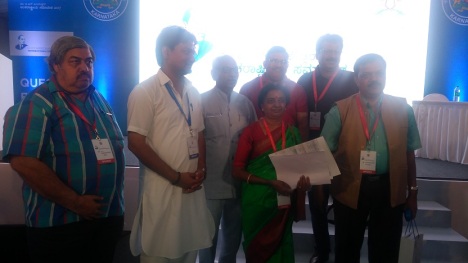
What Soosai vs UOI judgment says: Castes of Hindu religion identified on ‘untouchability’ related parameters were already scheduled under the 1936 Order. The validity of the order was considered by the Supreme Court in Writ Petition No. 9596/83 in the case of Soosai Vs The Union of India and Others (AIR 1986 SC 733). In para 7 of the judgment the Court had observed that “Now it cannot be disputed that the Caste system is a feature of the Hindu social structure. It is a social phenomenon peculiar to Hindu society. The Apex Court in para 8 of the judgment thus, observed that, “it is therefore, not possible to say that President acted arbitrarily in the exercise of his judgment in enacting paragraph 3 of the Constitution (Scheduled Castes) Order, 1950.” This is also sustained by the debate in Constituent Assembly which recognised “That the Scheduled Castes were a backward section of the society who were handicapped by the practice of untouchability” and that “This evil practice of untouchability was not recognised by any other religion” i.e. other than Hindu. It is apparent that the Constitution (SC) Order, 1950 relates to castes of Hindu religion. It only relates to the Castes discriminated within the Hindu religious system. The Constitution (SC) Order, 1950 is thus not discriminatory or violative of Articles 14, 15, 16 & 25 of the Constitution nor is it ultra vires of the Constitution as it provides for a special category i.e. the Scheduled Castes who have been given a special status under the Constitution. The Constitution (SC) Order, 1950 is thus neither unconstitutional nor ultra-vires of the Constitution nor it is violative of any fundamental right guaranteed by the Constitution. Here, the Christians never appealed or filed any revision petition against this order, but kept quite. At Vatican level, they had many issues and problems, as the Bishops and Cardinals have been following race or caste hierarchical structure. So far, no Black has been elected for the post of Pope, in spite of their claims.

Ironically, all quoted judgments were delivered during the Congress regime: The Soosai vs UOI judgment was delivered and reported in 1986, i.e, when the Congress was in power. Had the Congress party or the ideologists and other associated felt that the judgment was against their interests, they could have gone on revision and appeal to a larger bench. In other words, Congress should have been blamed, accused or attacked for following such communal, anti-social justice and saffron agenda some 30 years ago. Even the other case laws, he mentioned are also dated to 1950, 1974 ad 1983, clearly pointing to congress regime. Therefore, it is evident that Congress was responsible for such condition, whereas, he tried to interpret differently. Coming to the Soosai vs UOI, ironically, the affected party, the Christians themselves did not appeal against and kept quiet, evidently understanding the legal position and also fearing that they might lose hold on SCs in future. In fact, it is open secret and well-known fact that the SC, converted to Christianity have been advised not to reveal their conversion, religious identity as otherwise, they would lose their SC status. In other words, legally, they have been living as Hindus, in spite of getting converted to Christianity. Thus, they have been cheating the Gods of both Christian and Hindu religions. Yet, the Christian missionaries, groups and organizations have been demanding for SC status. Thus, the researchers like Tanweer Fazal could very well argue that Congress was the culprit by aiding and abetting the SC judgments.
Whether Muslims can get SC status by converting back to Hindu religion?: A Muslim from audience asked, “I wanted to convert back to Hindu religion and whether I could get SC status, as the Supreme Court pronounced in some cases, that a converted SC-Christian could get back, SC-status, when their SC members accepted him back as his member again. In the same way, if a SC-Muslim wanted to convert back to Hindu religion, whether he could get back SC-status”. Actually, these cases pertain to election candidates, where Christians converts contested elections at reserved constituencies, claiming that they were SCs. When, this was challenged at the courts, the Christians got certificates to the effect that they were Hindu SCs. So the courts pronounced that, as candidate converted back to Hindu religion and got a certificate, documentary evidence to that effect, he was considered as “Hindu”. It is not known as to how the present-day Muslims, who want to claim back their SC-status by converting back, would prove their caste identity. Ironically, most of them or some of them would also claim that they were not the converted categories from India, but, directly descended from the forefathers, who were of Arabic tribal origins [Ansaris, Mujahideen, and others]. If they were really interested in converting back, why then criticize “Gharwapasi”?
Origin of Caste – the Chairman spoke and wound up the session: Bhup Singh Gaur presented his paper on the approach of Harijans / SCs by Gandhi and Ambedkar. He interpreted that both leaders worked for the upliftment and welfare of the people in their own way. He pointed out that Amedkar was the only leader who attended all the three RTCs and consistently fighting for the rights of Depressed Castes. The third paper, “Dalit – A legal Perspective” was presented by S. Balakrishna Hedge. His paper was almost answering the issue raised by Tanweer Fazal. Finally, the chair of Prof Chandrama Kanagali presented her paper about the origin of caste in India. She pointed out that the origins of the term ‘caste’ are attributed to the Spanish and Portuguese casta, which, according to the John Minsheu’‘s Spanish dictionary (1599), means “race, lineage, or breed”. When the Spanish colonized the New World, they used the word to mean a “clan or lineage.” However, it was the Portuguese who employed casta in the primary modern sense when they applied it to the thousands of endogamous, hereditary Indian social groups they encountered upon their arrival in India in 1498. The use of the spelling “caste,” with this latter meaning, is first attested to in English in 1613.

The word “Dalit” is neither constitutional nor legal: Incidentally, it has to be pointed out in the context that the usage of word “dalit” in the context. The National Commission for Scheduled Castes has asked the state governments not to use the word ‘Dalit” in official documents, saying the term was “unconstitutional”. The commission has stated that sometimes the word ‘Dalit” is used as a substitute for Scheduled Caste in official documents, sources in State Tribal Department said in Raipur. After consultation with the legal department, the commission said the ‘Dalit” word is neither constitutional nor the word has been mentioned in the current laws. Rather ‘Scheduled Caste” is the appropriate and notified word as per the Article 341 of the Constitution, it said in a letter sent to all states. The writers and researchers do not care even about this and continue to mention the word for ulterior motive. The State governments also have been issuing orders in the context[11].

Jairam Ramesh……….

Aruna Roy

Kevin Brown was responding to querries
The three day Conference was over with academic and professional fulfilment: The keynote-6 session was held between 11.15 am and 12.45 pm chaired by Kalpana Kannabiran with paper presentation by –
- Jairam Ramesh, MP.
- Kevin Brown, Prof. Indiana University Maurer School of Law.
- Aruna Roy.
Why Congress did not confer Bhrat Ratna?: Congress MP Jairam Ramesh on Sunday said he is for abolishing Bharat Ratna and Padma awards. His remarks came in response to the objection from the audience at the Dr Ambedkar International Conference that the Congress opposed Ambedkar all along and the party did not confer Bharat Ratna on the maker of the Constitution when it was in power[12]. Taking part in a key-note session, Ramesh said: “When Bharat Ratna was instituted, it was decided that it should never be given away posthumously. And that’s the reason why the Centre did not confer it on Ambedkar. But the policy was revised subsequently and the government started conferring the award posthumously.” Dr B R Ambedkar was given the award in 1990 when V P Singh was the prime minister[13]. Commenting on political influences in awarding these recognitions, Ramesh said the awards had lost their sanctity and he would abolish them within 24 hours if he is made the prime minister. He also blamed the BJP and RSS for trying to “appropriate Ambedkar and his legacy.”

Jairam Ramesh attack – Modi murderer of democracy[14]: Former Union Minister Jairam Ramesh lashed out at the Rashtriya Swayamsevak Sangh (RSS) on 23-07-2017 (Sunday), accusing it of trying to “hijack” B.R. Ambedkar just as it had done with Mahatma Gandhi. “Prime Minister Narendra Modi has been consistently making efforts to shrink the space for parliamentary debate. At the same time, he himself is hijacking Dr. Ambedkar. So there is complete hypocrisy on the part of the PM and the RSS,” the Congress leader told The Hindu when asked about Dr. Ambedkar’s relevance in the current political scene. “BJP and RSS leaders have hijacked Ambedkar though they did not believe in the Constitution. The NDA government has systematically undermined Parliament by bringing all Bills through the Money Bill route,” Mr. Ramesh said on the sidelines of the international summit on Dr. Ambedkar. “Dr. Ambedkar would had not approved of whatever the Modi government has done in the past two years. Even the Aadhaar Bill was declared as a Money Bill.” He maintained that there was political competition for the Dalit vote and said the Congress has been holding programmes to reach out to Dalits, women and weaker sections of society[15].

Kevin Brown comparison

Prabhat Patnaik, Bronislaw and And Tetumbde spoke……

Some objected to their speech asserting that Congress was cornering “Dalits”, just for coming elections.

Japhet clarified to the objections.
After lunch, The keynote-6 session was held between 2.00 and 3.30 pm chaired by G. Hargopal with paper presentation by –
- Prabhat Patnaik.
- Bronislaw Czarnocha, CUNY, CUNY/Hostos CC.
- Anand Teltumbde.
Between 3.45 and 5.15 pm, “A conversation with Sri Siddaramaiah”, CM was held moderated by Rajendta Chenni. The entire exercise appeared pre-planned, as the way, the panelists asked questions and the responses came out. Anyway, the three day International conference was over and the arrangements made had been highly professional, the sessions academic and everyone would be benefited by listening to so many professors, scholars and experts. Thus, I returned to Chennai with new ideas generated for future research. I recall what Sri P. Manivannan recorded about the conference is 100% appreciable, as perhaps hundreds of workers would have been involved in all such arrangements and we should thank them[16]. Without their hard work, the conference could not have been materialized[17].
© K. V. Ramakrishna Rao
24-10-2017
[1] Deccan Chronicle, What’s wrong in a state flag: Shashi Tharoor, Published Jul 24, 2017, 2:40 am IST; Updated Jul 24, 2017, 2:40 am IST
[2] http://www.deccanchronicle.com/nation/politics/240717/whats-wrong-in-a-state-flag-shashi-tharoor.html
[3] Times of India, Nothing wrong in states having individual flags: Shashi Tharoor, BV Shivashankar| TNN | Updated: Jul 24, 2017, 06:23 IST
[4] https://timesofindia.indiatimes.com/city/bengaluru/nothing-wrong-in-states-having-individual-flags-shashi-tharoor/articleshow/59730786.cms
[5] Dr. Tanweer Fazal is Associate Professor at the Nelson Mandela Centre, JMI, New Delhi, Email: fazaltanweer@yahoo.co.in, Phone: 91-9968822925 (M); http://www.jnu.ac.in/sss/csss/images/Tanwer-Fazal/CV Tanweer Fazal.pdf
[6] Supreme Court of India – K.P. Manu,Malabar Cements Ltd vs Chairman,Scrutiny Commt … on 26 February, 2015 arising out of CIVIL APPEAL No. 7065 OF 2008; https://indiankanoon.org/doc/98912765/
[7] https://www.researchgate.net/profile/Padmanabh_Samarendra/publication/302899845_Religion_Caste_and_Conversion_Membership_of_a_Scheduled_Caste_and_Judicial_Deliberations%27_Economic_and_Political_Weekly_li4_2016_pp_38-48/links/5732d20f08ae9f741b2362c4/Religion-Caste-and-Conversion-Membership-of-a-Scheduled-Caste-and-Judicial-Deliberations-Economic-and-Political-Weekly-li4-2016-pp-38-48.pdf?origin=publication_detail
[8] Madras High Court – G. Michael vs Mr. S. Venkateswaran, Additional … on 6 November, 1951
Equivalent citations: AIR 1952 Mad 474, (1952) 1 MLJ 239; https://indiankanoon.org/doc/496218/
[9] Supreme Court of India – Ganpat vs Returning Officer & Ors on 4 December, 1974; Equivalent citations: 1975 AIR 420, 1975 SCR (2) 923; https://indiankanoon.org/doc/83094/
[10] Supreme Court of India – S. Anbalagan vs B. Devarajan & Ors on 5 December, 1983; Equivalent citations: 1984 AIR 411, 1984 SCR (1) 973; https://indiankanoon.org/doc/254650/
[11] The Kerala Information and Public Relations Department’s internal circular states that all official communication from now on needs to avoid the use of “Dalit” and “Harijan”.The order has been passed on the directions of Kerala State Commission for Scheduled Castes (SC) and Scheduled Tribes (ST) Chairman Justice PN Vijayakumar.
[12] Times of India, Jairam Ramesh wants abolition of Bharat Ratna, Padma awards, B V Shiva Shankar| TNN | Jul 24, 2017, 12:21 IST.
[13] https://timesofindia.indiatimes.com/city/bengaluru/jairam-ramesh-wants-abolition-of-bharat-ratna-padma-awards/articleshow/59728744.cms
[14] The Hindu, RSS trying to hijack Ambedkar, says Jairam Ramesh, Nagesh Prabhu, BENGALURU, JULY 23, 2017 23:38 IST, UPDATED: JULY 23, 2017 23:38 IST.
[15] http://www.thehindu.com/news/cities/bangalore/rss-trying-to-hijack-ambedkar-says-jairam-ramesh/article19337966.ece
[16] P Manivannan, What went into organising the Ambedkar Conference
QUEST FOR EQUITY: RECLAIMING SOCIAL JUSTICE, REVISITING AMBEDKAR, August 7, 2017.
P Manivannan, Chief Project Officer at Karnataka State Highways Improvement Project, was also Secretary, Social Welfare Department, Government of Karnataka till recently.
[17] http://bengaluru.citizenmatters.in/ambedkar-international-conference-2017-organising-bangalore-20649
Filed under: ambedkar, black, centre, constitution, dalit, history, india, K. V. Ramakrishna Rao, nation, nation building, nation-state, nationalism, nationality, negritude, negro, politics, researcher, social justice | Tagged: 1950 order, ambedkar, Anand Teltumbde, aruna roy, bangalore, bronislaw czarnocha, congress, constitution, conversion, dalit, Jairam Ramesh, judgment, K.P.Manu, Kevin Brown, prabhat patnaik, presidential order, Shashi tharoor, soosai, soosai vs uoi, tanweer Fazal | Leave a comment »







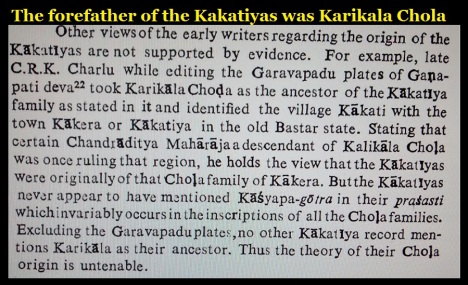





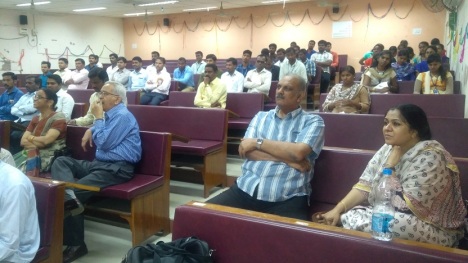









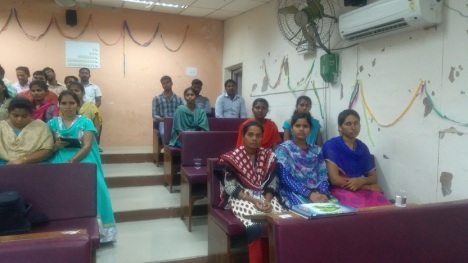

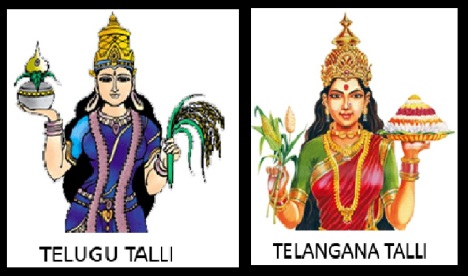






































 In India only, the British brought certain acts to segregate and brand certain tribes as “criminal”, as they did not obey to them by force or otherwise. The term Criminal Tribes Act (CTA) applies to various pieces of legislation enforced in India during British rule; the first enacted in 1871 as the Criminal Tribes Act, 1871 applied mostly in North India. The Act was extended to Bengal Presidency and other areas in 1876, and, finally, with the Criminal Tribes Act, 1911, it was extended to Madras Presidency as well. The Act went through several amendments in the next decade and, finally, the Criminal Tribes Act, 1924 incorporated all of them.
In India only, the British brought certain acts to segregate and brand certain tribes as “criminal”, as they did not obey to them by force or otherwise. The term Criminal Tribes Act (CTA) applies to various pieces of legislation enforced in India during British rule; the first enacted in 1871 as the Criminal Tribes Act, 1871 applied mostly in North India. The Act was extended to Bengal Presidency and other areas in 1876, and, finally, with the Criminal Tribes Act, 1911, it was extended to Madras Presidency as well. The Act went through several amendments in the next decade and, finally, the Criminal Tribes Act, 1924 incorporated all of them.


























